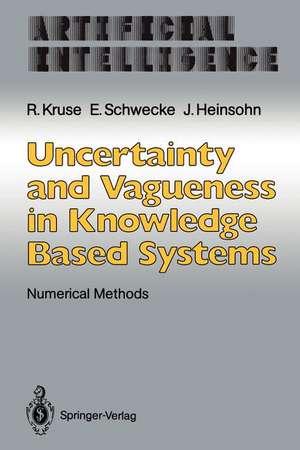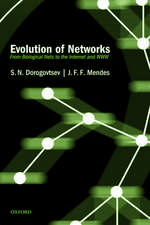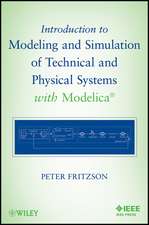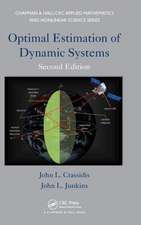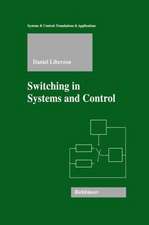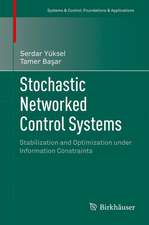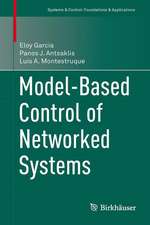Uncertainty and Vagueness in Knowledge Based Systems: Numerical Methods: Artificial Intelligence
Autor Rudolf Kruse, Erhard Schwecke, Jochen Heinsohnen Limba Engleză Paperback – 21 dec 2011
Din seria Artificial Intelligence
-
 Preț: 78.18 lei
Preț: 78.18 lei - 8%
 Preț: 218.19 lei
Preț: 218.19 lei -
 Preț: 78.18 lei
Preț: 78.18 lei -
 Preț: 78.18 lei
Preț: 78.18 lei - 20%
 Preț: 724.25 lei
Preț: 724.25 lei - 20%
 Preț: 721.65 lei
Preț: 721.65 lei - 20%
 Preț: 719.60 lei
Preț: 719.60 lei - 23%
 Preț: 654.44 lei
Preț: 654.44 lei - 20%
 Preț: 365.80 lei
Preț: 365.80 lei - 20%
 Preț: 324.64 lei
Preț: 324.64 lei - 20%
 Preț: 342.28 lei
Preț: 342.28 lei - 20%
 Preț: 659.97 lei
Preț: 659.97 lei - 20%
 Preț: 330.24 lei
Preț: 330.24 lei - 20%
 Preț: 641.01 lei
Preț: 641.01 lei - 20%
 Preț: 555.53 lei
Preț: 555.53 lei - 20%
 Preț: 375.15 lei
Preț: 375.15 lei - 20%
 Preț: 331.58 lei
Preț: 331.58 lei - 20%
 Preț: 661.47 lei
Preț: 661.47 lei - 20%
 Preț: 654.70 lei
Preț: 654.70 lei - 20%
 Preț: 1006.48 lei
Preț: 1006.48 lei - 20%
 Preț: 647.79 lei
Preț: 647.79 lei - 15%
 Preț: 638.89 lei
Preț: 638.89 lei - 20%
 Preț: 1001.16 lei
Preț: 1001.16 lei - 20%
 Preț: 834.69 lei
Preț: 834.69 lei - 20%
 Preț: 326.46 lei
Preț: 326.46 lei - 20%
 Preț: 757.48 lei
Preț: 757.48 lei - 20%
 Preț: 642.19 lei
Preț: 642.19 lei - 20%
 Preț: 328.27 lei
Preț: 328.27 lei - 20%
 Preț: 339.99 lei
Preț: 339.99 lei - 20%
 Preț: 342.96 lei
Preț: 342.96 lei - 20%
 Preț: 648.44 lei
Preț: 648.44 lei - 20%
 Preț: 657.99 lei
Preț: 657.99 lei - 20%
 Preț: 330.42 lei
Preț: 330.42 lei - 20%
 Preț: 654.55 lei
Preț: 654.55 lei -
 Preț: 394.29 lei
Preț: 394.29 lei - 20%
 Preț: 652.73 lei
Preț: 652.73 lei - 20%
 Preț: 1051.00 lei
Preț: 1051.00 lei - 20%
 Preț: 338.81 lei
Preț: 338.81 lei - 20%
 Preț: 709.98 lei
Preț: 709.98 lei - 20%
 Preț: 344.93 lei
Preț: 344.93 lei - 20%
 Preț: 650.27 lei
Preț: 650.27 lei - 20%
 Preț: 639.35 lei
Preț: 639.35 lei
Preț: 656.03 lei
Preț vechi: 820.04 lei
-20% Nou
Puncte Express: 984
Preț estimativ în valută:
125.53€ • 131.40$ • 104.48£
125.53€ • 131.40$ • 104.48£
Carte tipărită la comandă
Livrare economică 31 martie-14 aprilie
Preluare comenzi: 021 569.72.76
Specificații
ISBN-13: 9783642767043
ISBN-10: 3642767044
Pagini: 512
Ilustrații: XI, 491 p.
Dimensiuni: 155 x 235 x 27 mm
Greutate: 0.71 kg
Ediția:Softcover reprint of the original 1st ed. 1991
Editura: Springer Berlin, Heidelberg
Colecția Springer
Seria Artificial Intelligence
Locul publicării:Berlin, Heidelberg, Germany
ISBN-10: 3642767044
Pagini: 512
Ilustrații: XI, 491 p.
Dimensiuni: 155 x 235 x 27 mm
Greutate: 0.71 kg
Ediția:Softcover reprint of the original 1st ed. 1991
Editura: Springer Berlin, Heidelberg
Colecția Springer
Seria Artificial Intelligence
Locul publicării:Berlin, Heidelberg, Germany
Public țintă
ResearchCuprins
1. General Considerations of Uncertainty and Vagueness.- 1.1 Artificial Intelligence.- 1.2 Modeling Ignorance.- 1.3 The Scope of the Book.- 2. Introduction.- 2.1 Basic Notations.- 2.2 A Simple Example.- 2.3 Vagueness and Uncertainty.- 3. Vague Data.- 3.1 Basic Concepts.- 3.2 On the Origin of Vague Data.- 3.3 Uncertainty Handling by Means of Layered Contexts.- 3.4 The General Case.- 3.5 Concluding Remarks.- 4. Probability Theory.- 4.1 Basic Concepts.- 4.2 Probabilities on Different Sample Spaces.- 4.3 Bayesian Inference.- 4.4 Classes of Probabilities.- 4.5 Decision Making Aspects.- 4.6 Aggregating Probability Distributions.- 4.7 Concluding Remarks.- 5. Random Sets.- 5.1 Random Variables.- 5.2 The Notion of a Random Set.- 5.3 Decision Making in the Context of Vague Data.- 5.4 The Notion of an Information Source.- 5.5 Concluding Remarks.- 6. Mass Distributions.- 6.1 Basic Concepts.- 6.2 Different Frames of Discernment.- 6.3 Measures for Possibility/Necessity.- 6.4 Generalized Mass Distributions.- 6.5 Decision Making with Mass Distributions.- 6.6 Knowledge Representation with Mass Distributions.- 6.7 Simplifying Assumptions.- 6.8 Concluding Remarks.- 7. On Graphical Representations.- 7.1 Graphs and Trees.- 7.2 Hypergraphs and Hypertrees.- 7.3 Analysis of Simple Hypertrees.- 7.4 Dependency Networks.- 7.5 Triangulated Graphs.- 7.6 Directed Acyclic Graphs.- 7.7 Concluding Remarks.- 8. Modeling Aspects.- 8.1 Rule Based Approaches.- 8.2 Model Based Representations.- 8.3 Dependency Network Based Systems.- 9. Heuristic Models.- 9.1 MYCIN — The Certainty Factor Approach.- 9.2 RUM — Triangular Norms and Conorms.- 9.3 INFERNO — A Bounds Propagation Architecture.- 9.4 Other Heuristic Models.- 10. Fuzzy Set Based Models.- 10.1 Fuzzy Sets.- 10.2 Possibility Distributions.- 10.3Approximate Reasoning.- 10.4 Reasoning with Fuzzy Truth Value.- 10.5 Conclusions.- 11. Reasoning with L-Sets.- 11.1 Knowledge Representation with L-Sets.- 11.2 On the Interpretation of Vague Rules.- 11.3 L-Sets on Product Spaces.- 11.4 Local Computation of Marginal ¿-Sets.- 11.5 The Propagation Algorithm.- 11.6 Aspects of Implementation.- 12. Probability Based Models.- 12.1 The Interpretation of Rules.- 12.2 The Straightforward Use of Probabilities.- 12.3 PROSPECTOR — Inference Networks.- 12.4 Decomposable Graphical Models.- 12.5 Propagation Based on Dependency Networks.- 12.6 Concluding Remarks.- 13. Models Based on the Dempster-Shafer Theory of Evidence.- 13.1 The Mathematical Theory of Evidence.- 13.2 Knowledge Representation Aspects.- 13.3 The Straightforward Use of Belief Functions.- 13.4 Belief Functions in Hierarchical Hypothesis Spaces.- 13.5 MacEvidence — Belief Propagation in Markov Trees.- 13.6 Conclusions.- 14. Reasoning with Mass Distributions.- 14.1 Matrix Notation for Specializations.- 14.2 Specializations in Product Spaces.- 14.3 Knowledge Representation with Mass Distributions.- 14.4 Local Computations with Mass Distributions.- 14.5 The Propagation Algorithm.- 14.6 Aspects of Implementation.- 15. Related Research.- 15.1 Nonstandard Logics.- 15.2 Integrating Uncertainty Calculi and Logics.- 15.3 Symbolic Methods.- 15.4 Conclusions.- References.
